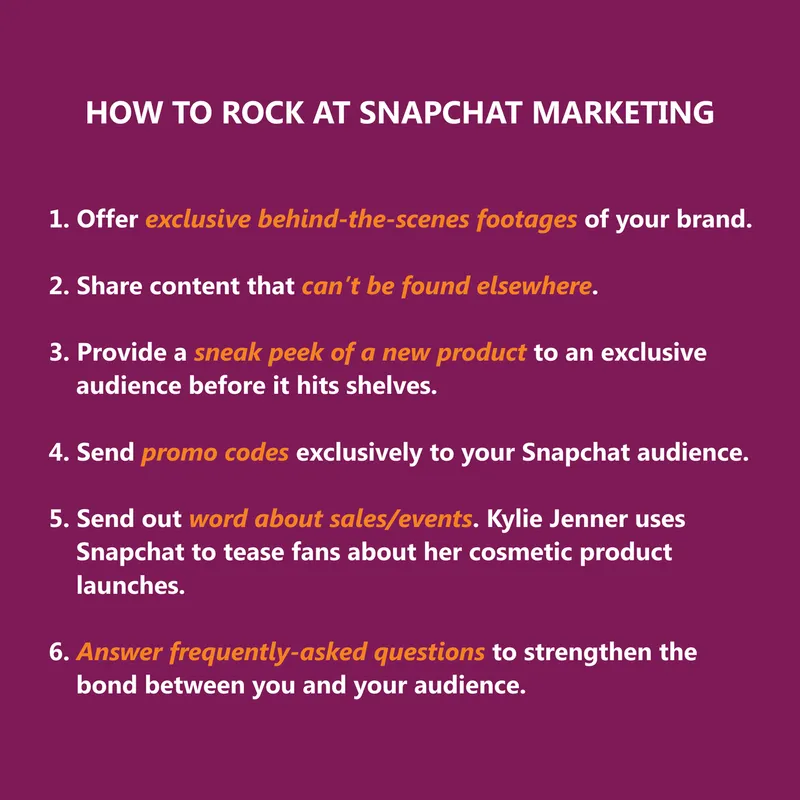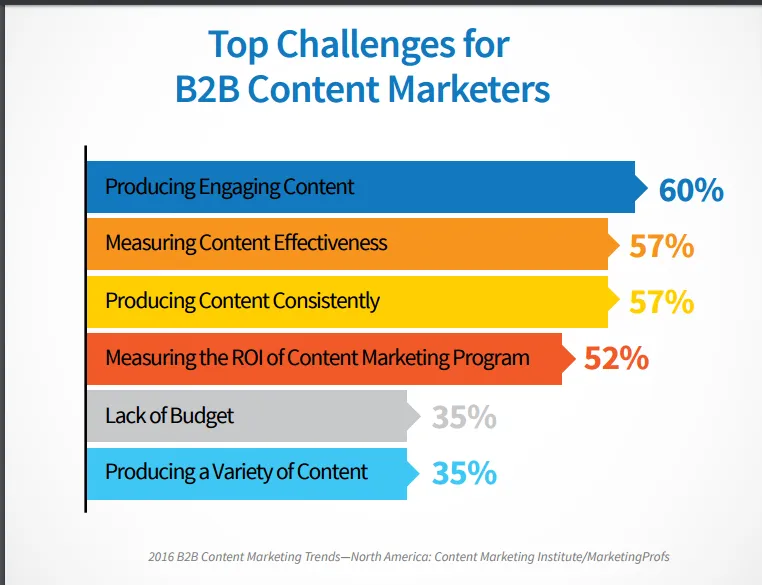State of content marketing in 2016: the hits and the misses
These insights will help you start the new year with a renewed content marketing strategy.
For the last few years, content marketing has formed the largest part of every inbound marketing strategy. Do you use content marketing to generate traffic, leads, or conversions?
If you do, this post about the hits and misses of content marketing in 2016 will help you reassess your ongoing efforts and help you make the necessary changes.
If you’re among those starting out with marketing your product, service, or startup, this post will help you get off on the right foot.
So let’s get straight to it — the state of content marketing in 2016. These components will enable you to stand apart from the competition, build your brand, and gain more traction in 2017.

The hits:
#1. Several major brands came up with amazing video marketing campaigns.
Until 2015, there were only a handful of brands, such as GE, Red Bull, and Go Pro that came to mind when you thought about brands creating awesome content.
This year, several top brands created video content campaigns that resonated with the viewers’ feelings rather than direct upselling. The notable ones among them were:
- Intel’s five-part ‘Meet the Makers’ series showcased people from around the globe using Intel products to create amazing experiences and new technologies. These are motivational stories rather than the video stories created by brands.
Video Link - https://www.youtube.com/watch?v=B2G4zmW8Gsk
- Alone’s ‘Like A Girl’ campaign used the famous insult to grab your attention and changed it into the ultimate compliment it really is. This video series empowers viewers instead of making them feel inadequate.
Video Link - https://www.youtube.com/watch?v=L3BjUvjOUMc
- Nike’s ‘Da Da Ding’ video highlighted the growing importance of female athletes in Indian sports. The inspiring and accomplished athletes in this video motivate you to work out better and harder.
Video Link - https://www.youtube.com/watch?v=1UvPZ8fD4B8
The similarity among these videos is that they showcase the product or service in the context of an average consumer’s daily life without feeling like ads. This way, they put across their point while delighting the viewers and moving the marketing needle.
#2. The massive adoption of Snapchat to distribute live content.
With 10 billion mobile videos currently being viewed per day, Snapchat is beating Facebook in the context of daily video user engagement. All you need is a smartphone to record your content. The live video offers unedited and unfiltered content that gives the viewers a sense of realism. One reason why it’s a hit is because of the low cost of content creation with lower friction to create live content.
I got aboard the Snapchat wagon this year and studied the brands and influencers winning here. More than 70 percent of the users are millennials, offering brands a unique clutter-free chance of reaching out to their target audience. Some of my favourite influencers are Justin Kan (a Y Combinator Partner), Mann Billy (an entertainer), Turbanchino (a doodler), and Startup Journey (a channel where Indian entrepreneurs share their journeys).

#3. Just do one thing and do it well.
We know that the number of blogs or articles does not correlate to more traffic and leads. There are many parameters responsible for driving traffic to your blog and success is not equivalent to putting out more posts.
Every marketer and brand reads numerous articles on how to do content marketing the right way — write long-form content (over 2,000 words), write X times a week, include pictures, etc.
Amid this clutter, just do one thing and do it well. Do you want to build a brand or a publication? Don’t be in the middle.
Identify the value your brand offers, what it stands for, and the perception you intend to drive. If you offer one unique article or video per month consistently week after week, your audience will remember you. Consistency will help your audience trust you and build a connection with your brand.
As said by Brian Dean of Backlinko, “If you’re not good at storytelling, learn the skill or hire someone that does. If you don’t, you’re going to have a tough time in 2016.”
#4. 2016 was about writing less and promoting more.
Great marketing to get your content discovered by the target audience is a necessity. You’ll reap better results by writing one great blog post a week and spending the rest of the time promoting it than writing four average blogs and spending less time marketing them.
Promoting is hard and it initially takes up most of your time to build an audience base that returns every week. Some of the many channels you can leverage to promote your content include social media, paid advertising (mainly native ads and Facebook), contributing to relevant forums and starting discussions, and reaching out to relevant influencers, media, and newsletters.
To start with, try all possible outlets and identify the top two or three channels generating the maximum traffic, leads, and conversion. After identifying these sources, focus your time and efforts on those three channels.
#5. More than half (57 percent) of B2B technology marketers outsource content writing, designing, editing, and even documenting and distribution efforts.
Outsourcing content from an agency that specialises in your domain has the following advantages:
- Your ability to scale is limited only by budget and not your team’s time or resources. You can avoid hiring while scaling fast and laying off while scaling down.
- Since the agency has more experience in the content marketing domain, they’ll help you in strategising, implementation, promotion, and measurement.

The misses
#6. This year, fewer marketers documented their content marketing strategies. Seriously?
A lot of marketers struggle in this domain. Compared to last year, fewer marketers had a documented content marketing strategy. (From 35 percent last year to 32 percent this year)
There is no definite template for a content marketing strategy because it is different for every business.

While documenting a strategy does not guarantee success, you can gauge the success or failure. If in case it’s not effective, you know where to make adjustments.
#7. Despite 86 percent respondents indulging in content marketing, only 30 percent marketers said their organisations were doing it effectively.
Although there’s a wealth of information and a rise in the deployment of content marketing, most marketers are still struggling in many areas. A staggering 65 percent struggle to distinguish between effective and ineffective content.
The top challenges for B2B content marketers were:

#8. Most of the content published online goes nowhere.
When BuzzSumo and Moz analysed one million articles published online, they found:
- More than 75 percent articles had zero external links.
- More than 50 percent posts have two or less Twitter and Facebook shares and interactions, one or less Google+ shares, and zero LinkedIn shares.
The common mistakes that result in low engagement are:
- Lack of research: Do you know the type of content that resonated with your target audience? Have you researched into the type of content they like, share, and engage with? If your content answers the questions your audience asks, that’s where half the battle is won.
- Lack of an outreach strategy: So you’re creating high-quality content but have no takers for it? An outreach strategy includes the steps taken to bring the content to people’s attention. Some great ways to promote and distribute your content include:
- Joining industry-related communities: These forums provide excellent opportunities to network with fellow bloggers, influencers, and experts and share relevant articles.
- Effective use of social media: This is the simplest way to distribute your content. Share the published posts with your email subscribers and encourage your team members to share them on social networks.
- Advertising the published content: Advertising through syndication, native advertising, and AdWords is a good option and is profitable in the long term.
- Using online tools: Tools such as BuzzSumo, Periscope, and Flipboard help you get discovered by your audience.
- Lack of monitoring and tracking trends: Social sharing takes place rapidly (the Chewbacca Mom video of Candace Payne laughing hysterically in her car donning the Chewbacca mask is the most watched video of 2016, with 162 million views until Thursday). Jump on the bandwagon of these trends, reach out to experts for their views, or be the first one to share your views on them. These trends create short-term peaks of interest.
#9. Marketers spend more on social ads than on content marketing.
With the massive rise in content marketing, I thought companies would be spending more but the case seems to be opposite here. While 51 percent B2B marketers plan to increase their content marketing budget, 80 percent marketing teams increased their spending on advertising on social networks.
Inspite of content marketing costing 62 percent less than outbound marketing and generating 3X more leads (source: DemandMetric), we wonder what compels marketers to spend more on social media advertising.
#10. More than half of the marketers struggle with producing engaging content.
Newt Barrett sums it up brilliantly as: “Genuinely engaging content is so attractive and appealing that it disarms you from your very first encounter…and makes you want to linger to learn more. When it really connects with you, it will take your breath away. It’s a little bit like love at first sight.”

Conclusion:
Provide value to your consumers by sharing and effectively communicating content they haven’t seen before. This remains constant and isn’t specific to 2016 or any other year.
(Disclaimer: The views and opinions expressed in this article are those of the author and do not necessarily reflect the views of YourStory.)







